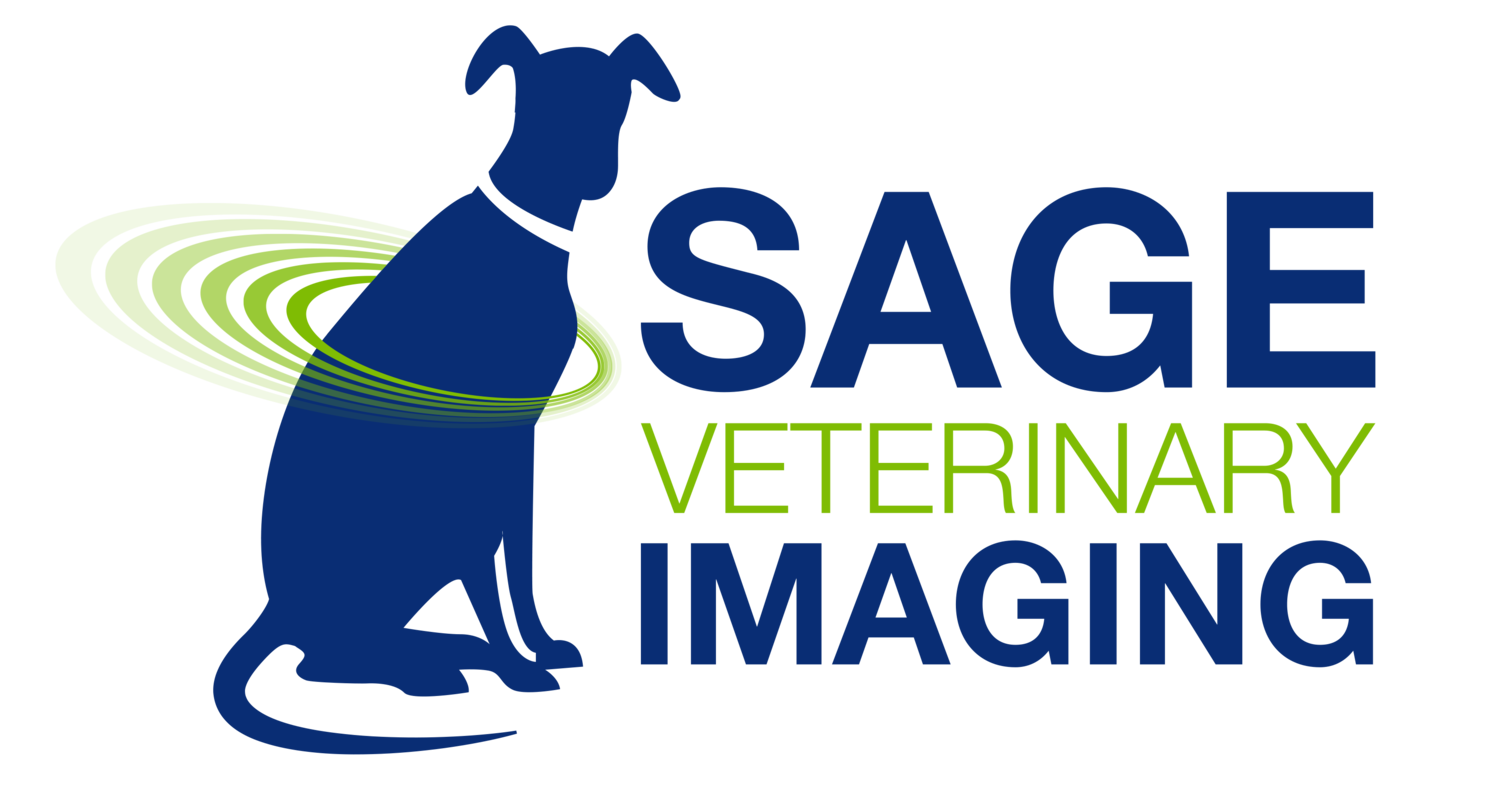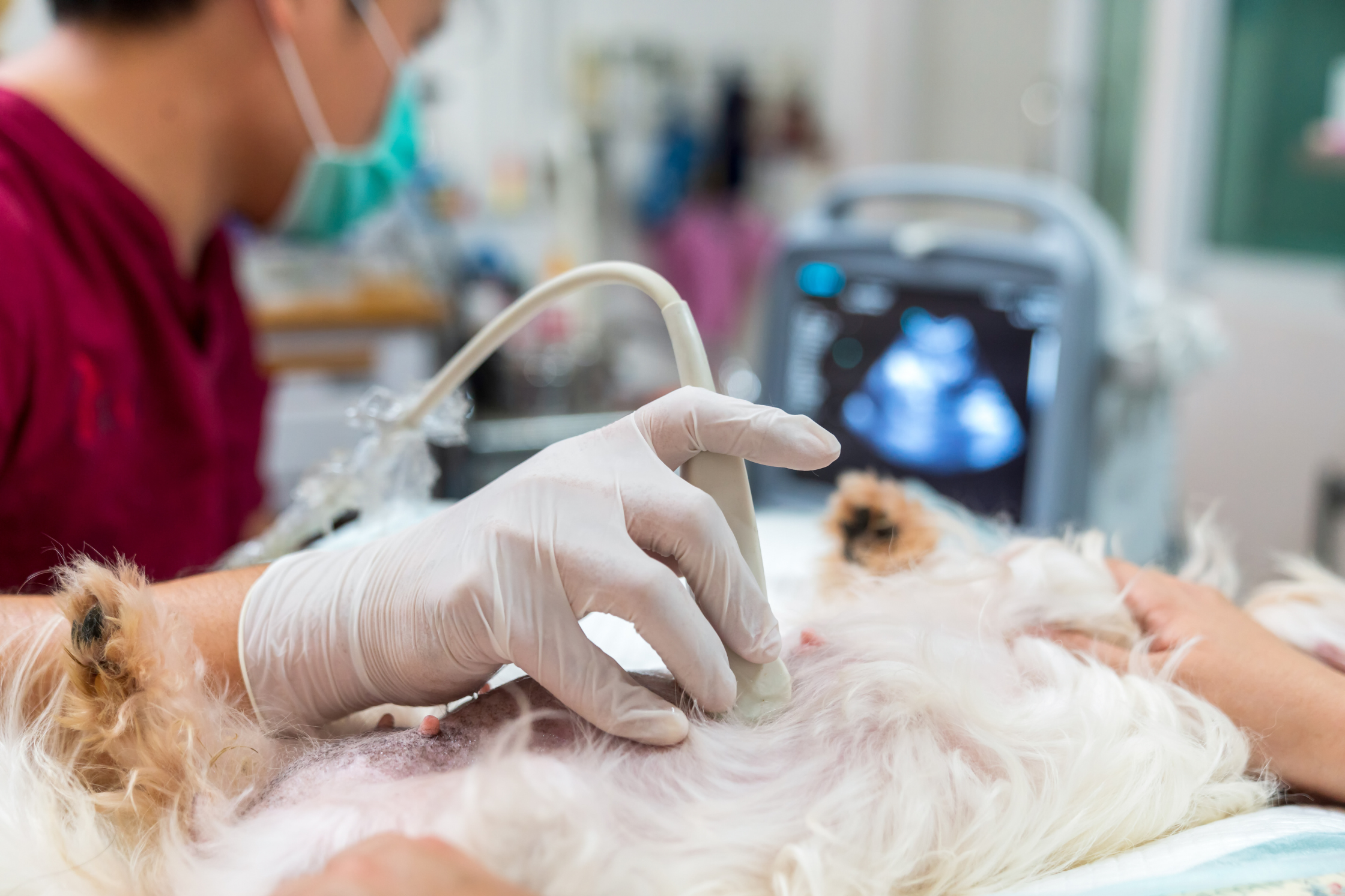Radiation Risk Levels: What Vet Imaging & Flying Have in Common
Just like flying, imaging for pets feels big but is safer than most people realize.
When you hear “X-ray” or “MRI scan” come out of your vet’s mouth, your first thought might be, “Is that safe for my pet?”—it’s a valid and common concern.
But here’s a helpful way to think about it: the risks of veterinary imaging are often no greater than everyday things we do without hesitation, like taking a flight, driving a car, or heating up leftovers in the microwave.
These procedures, whether it’s a CT scan, MRI, ultrasound, or X-ray, are carefully planned and monitored by skilled professionals. And in many cases, the insights they provide can be life-changing for your pets.
At Sage Veterinary Imaging (SVI), we specialize in advanced diagnostic imaging and are here to help you make informed, confident decisions about your pet’s care.
In this blog, we’ll cover:
How anesthesia, sedation, and radiation risks compare in imaging
When the benefits of early diagnosis outweigh the risks
Why imaging is more like flying than you might think
Let’s put things in perspective about radiation risks with veterinary diagnostic imaging—and help you feel good about your next steps!
Understanding Imaging Tools & Associated Risks
The most common veterinary imaging methods and their associated radiation risks.
When your vet recommends imaging, it’s completely normal to pause. Sedation, anesthesia, radiation—none of it sounds casual. But with today’s advanced tools and trained veterinary teams, these procedures are safer and more precise than ever.
Let’s take a quick look at the four most common imaging types and what kind of risk they actually pose:
Ultrasound: No radiation involved, and often no sedation needed.
X-rays: Fast, effective, and widely used—with only minimal radiation exposure.
CT Scans: Provide detailed cross-sectional images, using a higher dose of radiation.
MRI: Offers the best view of soft tissues like the brain and spine. Requires anesthesia but involves zero radiation.
The bottom line? Most imaging risks are extremely low and carefully managed. Your vet will only recommend these tools when the benefits outweigh the risks—like getting clear answers that lead to better outcomes.
Flying vs. Imaging: A Helpful Perspective
To put things into perspective, think about the risks you take every day without a second thought—driving, microwaving leftovers, or flying across the country. Imaging risks fall into that same category: they’re real, but very small.
Flying, for example, exposes us to radiation from high-altitude cosmic rays. But the amount is so tiny that we rarely even think about it. Let’s compare:
Cross-country flight (U.S.) – ~0.03 mSv of radiation
Chest X-ray – ~0.1 mSv
Head CT scan – ~2 mSv
Abdominal CT scan – ~8 mSv
Annual background radiation (just from living on Earth) – ~3 mSv
A single CT scan for your pet might expose them to the equivalent of a few flights or a few months of simply living on Earth. And unlike people, pets aren’t frequent flyers or regular scan recipients. For most animals, the lifetime radiation exposure from a single scan is negligible.
Up next, we’ll share how to weigh these risks based on your pet’s unique needs and which questions to ask your vet so you can feel confident in your care decisions.
Make an Informed Decision About Veterinary Imaging
Ultrasound is one of the safest, most common imaging tools used to assess soft tissues in pets.
No one knows your pet better than you do. And when it comes to their health, you want to be sure you’re doing what’s best, not just what’s available. That’s why understanding both the benefits and the risks of veterinary imaging is so important.
The goal isn’t to eliminate risk altogether (that’s rarely possible) but to make sure the value of the information you gain outweighs any discomfort or concern.
Here are a few questions to ask your vet to help guide your decision:
What are we hoping to find with this scan?
Are there less invasive options we could try first?
Does my pet need full anesthesia or would sedation be enough?
What are the specific risks for my pet based on their age, breed, and health history?
If we don’t do imaging now, what’s the potential outcome?
These questions open a dialogue with your vet and give you the clarity and confidence to say yes (or no) with peace of mind. Because at the end of the day, you’re not just making a medical decision–you’re making a big one for your best friend.
Next, we’ll talk about how veterinarians assess risk and why, in many cases, the diagnostic clarity imaging provides can make a life-changing difference.
When Is Veterinary Imaging Worth the Risk?
At SVI, your pet’s imaging is performed with expert care, precision, and calm, gentle handling.
Imaging isn’t always the first step or even necessary. However, in certain situations, it can make all the difference in diagnosing and treating a condition early. Other times, it might be totally reasonable to hold off, monitor symptoms, or try other approaches first.
Let’s look at a few common scenarios to help you understand how these decisions are made.
When your pet has unexplained symptoms: If bloodwork comes back normal but your cat is still losing weight, acting strangely, or showing pain, imaging can reveal what’s going on beneath the surface.
There’s concern about cancer, organ damage, or internal injury: CT or MRI can provide the level of detail needed to catch tumors early or assess the extent of trauma.
Your vet needs a clear roadmap for surgery: Pre-operative scans help guide surgical planning, reducing risks and increasing success rates.
When It Might Make Sense to Wait
Symptoms are mild and stable: If your cat is eating well, acting normal, and only showing minor or occasional symptoms, your vet may suggest monitoring for changes first.
The outcome won’t change the care plan: If a scan would confirm a suspected diagnosis but not alter the course of treatment, some vets and owners choose to skip it.
Your pet has serious anesthesia risks: For some older pets or those with heart or lung conditions, the risks of sedation may outweigh the benefits—at least temporarily.
Every case is different, which is why working closely with your veterinarian is so important. You bring your love and firsthand knowledge of your pet; they bring clinical expertise and experience. Together, you can figure out what makes the most sense, not just medically but emotionally and financially, too.
Sage Veterinary Imaging: Your Trusted Vet Specialists
The Round Rock, Texas SVI team, ready to help find answers for your pets.
Like flying, veterinary imaging might sound intimidating, but once you understand the true risks and the value of what you’ll learn, the decision becomes clearer.
If you're still unsure, that’s okay. Just like planning a trip, it’s smart to pause, weigh your options, and talk to a trusted guide. At Sage Veterinary Imaging, we're here to help you move forward, not with pressure, but with clarity and care.
Contact us today and we’ll help you chart the right course, so you can make confident, informed decisions about your pet’s health.





